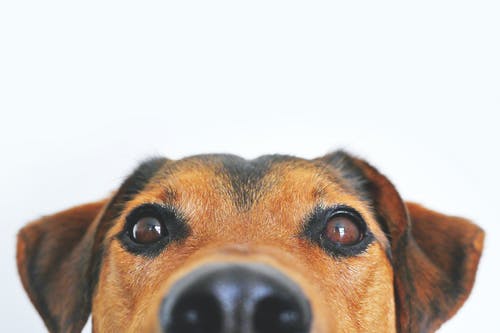Your dogs’ eyes are a window into their souls, and you can see the love and devotion mirrored in them. If your pet’s eyes have been red or clouded recently, or if you’ve spotted them pawing at, scratching, or displaying indications of discomfort around their eyes, you may need to see your vet. The sooner an eye condition is diagnosed and treated, the better.
Recognizing and treating canine ophthalmologic crises as soon as possible with precision is critical. The ability to save a patient’s eyesight and, in many cases, the eye itself might depend on the timely and accurate diagnosis and treatment of an issue.
Understanding Dog Eye Emergencies
Any minor injury to the eye might have a serious impact due to the complexity of its structures. If you believe that your pet is experiencing an eye emergency, you should never take a chance; instead, you should have this checked out by your veterinarian. Continue reading to learn about and understand canines’ frequent eye emergencies.
1. Proptosis
It is called proptosis, when an eyeball protrudes from the socket and is encased by the eyelid. This is a true emergency and commonly happens in breeds with tiny heads. It may also occur as a result of a blow to the head. Inflamed and swollen eyes pull the orbit farther away from the eye.
The eye gets dry, and vision may worsen or completely disappear. It’s possible that even if the dog receives quick medical attention, the eye may be lost due to damage to the dog’s eyelid muscles, nerves, and blood supply.
To search for a reputable vet opthalmologist, you can type in “vet ophthalmologist near me” in your search bar for the best results available in your area.
2. Corneal Injuries
Corneal ulcers may occur if the eye isn’t hydrated correctly or if it has been injured. An infection may worsen an ulcer and make treating it much more challenging. Possible problems include scarring or discoloration of the cornea and the formation of cataracts. The cornea may also be partly or wholly lacerated by bites, self-inflicted damage, and other incidents.
Corneal partial-thickness lacerations are often excruciating. To seal the injury, sutures may be necessary. There may be a need for antibiotics and other drugs. Corneal injuries may require the services of a vet surgeon. In some cases, surgical procedures are needed to remediate the pain and to correct the problem.
3. Acute Glaucoma
Glaucoma develops when the eye’s pressure rises for any cause, resulting in discomfort, secondary changes, and blindness. Most of the time, only one eye is affected; nevertheless, both eyes are at risk. A “red” or “discolored” eye is a sign of acute glaucoma.
Swelling and uncomfortable blinking are also possible symptoms. Diagnosis and treatment of acute glaucoma should be initiated quickly. Medications used orally and topically are also employed.
4. Lens Dislocation
The lens of the eye might become displaced and protrude. Middle-aged dogs of the terrier breeds are more likely to suffer from lens dislocations. Excess fluid and high intraocular pressure may cause the eyeball to swell, making it seem red.
Tears and eyelid spasms may be visible. Treatment includes lens removal and lowering eye pressure to normal levels. Glaucoma and retinal detachment are possible side effects of lens removal surgery.
In order to save your pet’s vision, it is crucial to address the problem with the help of a specialist and an emergency veterinarian. You can click here for ideas and information about their services.
5. Acute Vision Loss
Many eyes, brain, and nerve ailments, as well as generalized conditions, may lead to a sudden loss of vision. Blindness may strike without warning. Large areas of the retina are required to cause acute visual loss. This might also be an indication that the optic nerve has been injured.
Vision evaluation requires a comprehensive examination. Subjective assessment of vision is needed; however, visual field evaluation is impossible in animals. Veterinarians that specialize in animal eye care may be necessary.


